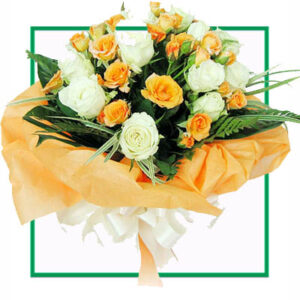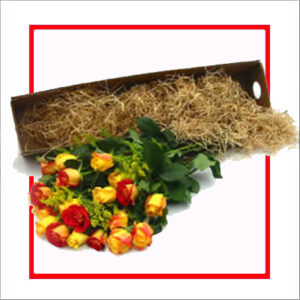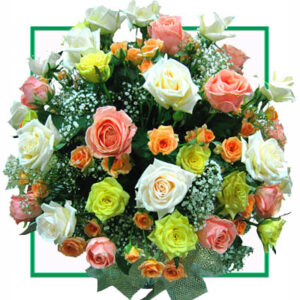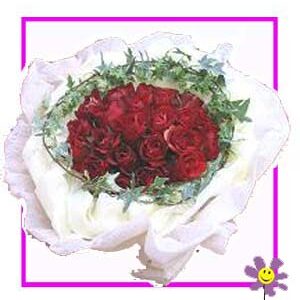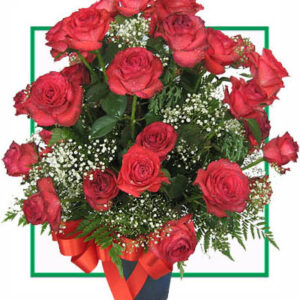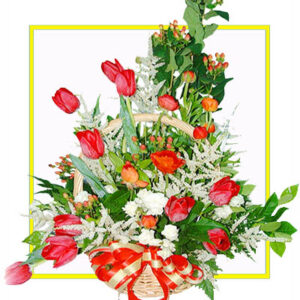Bhavsinhji ensured that Bhavnagar benefited from the revenue that was brought in from maritime trade, which was monopolised by Surat and Cambay. As the castle of Surat was under the control of the Sidis of Janjira, Bhavsinhji brokered an agreement with them, giving the Sidis 1.25% of the revenue generated by Bhavnagar port. Bhavsinhji entered into a similar agreement with the British when they took over Surat in 1856.Whilst Bhavsinhji was in power, Bhavnagar grew from a small chieftainship to a considerably important state. This was due to the addition of new territories as well as the income provided by maritime trade. Bhavsinhji’s successors continued to encourage maritime trade through Bhavnagar port, recognising its importance to the state. The territory was further expanded by Bhavsinhji’s grandson, Vakhatsinhji Gohil when he took possession of lands belonging to Kolis and Kathis, obtained Rajula from the Navab Saheb Ahmad Khan, and merged Ghogha Taluka into the state. In 1793, Vakhatsinhji conquered the forts of Chital and Talaja, and later conquered Mahuva, Kundla, Trapaj, Umrala and Botad.Bhavnagar remained the main port of the state, with Mahuva and Gogha also becoming important ports. Because of the maritime trade, the state prospered compared to other states. During the late 19th century, the Bhavnagar State Railway was constructed. This made Bhavnagar the first state that was able to construct its railway system without any aid from the central government, which was mentioned in the Imperial Gazetteer. Mr Peile, a political agent, described the state as follows: “With flourishing finances and much good work in progress. Of financial matters I need say little; you have no debts, and your treasury is full.” Between 1870 and 1878 the state was put under joint administration, due to the fact that Prince Takhtsinhji was a minor. This period produced some notable reforms in the areas of administration, revenue collection, judiciary, the post and telegraph services, and economic policy. The ports were also modernised. The two people who were responsible for those reforms were Mr E.H Percival of the Bombay Civil Service and Sri Gaurishankar Udayshankar Oza, Chief Minister of Bhavnagar State. In 1911, HH Maharani Nundkanvarba of Bhavnagar, was awarded the Order of the Crown of India, the highest Imperial award for women of the Empire. The former princely state of Bhavnagar was also known as Gohilwad; “Land of the Gohils” (the clan of the ruling family). The current royal family of Bhavnagar resides in the Nilambagh Palace. Part of the Palace have been converted to a heritage hotel. The current Royal Family of Bhavnagar comprises Maharaja Vijayraj Singh Gohil and Maharani Samyukta Kumari, Prince Yuvraj Jaiveerraj Singh Gohil and Princess Brijeshwari Kumari Gohil.
Bhavnagar is known for pioneering and laudable efforts in the fields of rural, children’s as well as women’s education. Nanabhai Bhatt, Gijubhai Badheka, Manbhai Bhatt (Founder of Shishuvihar), Harbhai Trivedi, Gijubhai Badheka, and Taraben Modak were the pioneers who experimented and sowed new trends in rural and children’s education. Nanbhai’s institutions of Dakshinamurti at Bhavnagar, Gram Dakshinamurti at Amala, and Lokbharti at Sanosara have prepared three generations of brilliant workers and leaders engaged in reshaping village India. Gijubhai’s Dakshinamurti became the cradle of children’s education and charted a new direction in the field. Harbhai Trivedi pioneered a similarly new trend in secondary education and his Home School became a model for contemporary educators in Western India.Liberal women’s education was born in Bhavnagar through the efforts of another illustrious educator-social reformer Amrutlal Dani. Sheth J. P. Govt. Ayurved College is one of the colleges of the well-known Gujarat Ayurved University, Jamnagar that offers BAMS (Ayurvedacharya) course (35 seats per year). The college is situated in Vadva area and is named after Sheth Jivandas Prabhudas. Tapibai Ayurvedic Hospital which is the district level Ayurvedic hospital is part of this college.
Bhavnagar is the largest producer of salt, with 34,500 tons of salt being produced annually in the district. The Alang ship breaking yard is the biggest in the world, recycling about 50% of the salvaged ships of the world. This has also helped developing supporting industries, such as oxygen bottling plants, re-rolling mills, and induction furnaces. Bhavnagar manufactures FRP (Fiberglass Reinforced Plastic) boats and steel vessels at the ship building facility of Alcock Ashdown Ltd. The prominent industries located in Bhavnagar are Alcock Ashdown (Government of Gujarat Undertaking), Tamboli Castings Limited, Excel, SteelCast Bhavnagar, Investment & Precision Castings, Elite Chemicals and Sound Build Care Pvt Ltd. Ruvapari Road and Nari Road are areas where most industries are clustered. Bhavnagar has about 150 units manufacturing plastic monofilaments, and more than 400 units manufacturing plastic cloth, twine, ropes, films, and multifilament yarn. Some sections of the society depend upon agriculture for their livelihood. The city is a prominent trading post for cotton products. There are 112 medium and large scale industries located in Bhavnagar district.
The new name of Bhavnagar University is ‘Maharaja Krushan Kumar Sinhji Bhavnagar University’ it is located in Bhavnagar city in the western province of Gujarat, India. The University Most probably covered a District area of Bhavnagar. The university provides teaching and research programs in Arts, Commerce, Science, Engineering, Medicine, Management, Rural Studies and Law Faculties. It has 25 departments, 18 postgraduate centres and four recognised institutes and research centres. 100 colleges affiliated to university belong to Arts, Science, Commerce, Law, Education, Engineering, Management, Rural and Medical disciplines. Twenty two post graduate courses are run by some of the colleges which are affiliated to University. Bhavnagar University came into being in 24 May 1979. Its land-estate area is 198.29 acres. A recent breakthrough in field of optical science was achieved by scientist Rasbindu Mehta of the university to trap light.
Until the independence of India in 1947, Bhavnagar was an independent state ruled by the Rajput Gohil clan. In 1947, the Deputy Prime Minister of the newly independent Indian Union Sardar Vallabhbhai Patel undertook the ambitious and complex process of unifying 565 princely states with the Union of India. The last Maharaja of Bhavnagar, Krishnakumar Sinhji handed over the administration of his Bombay State to the people’s representative in 1948, and Bhavnagar became the first of these states to join the Indian Union. The erstwhile royal family of Bhavnagar continues to lead an active role in the public eye as well as in business (hotels, real-estate, agriculture & ship-breaking) and is held in high regard by the population both in the city as well as areas that comprised the former princely state of Bhavanagar.
Industrial development in Bhavnagar district could be attributed to the presence of a large number of diamond cutting and polishing units, salt and marine chemicals, plastics, ship building, and ship-breaking industries. Bhavnagar is an important centre for the diamond cutting and polishing industry in Gujarat as well as India. Thousands of skilled diamond-polishing workers are employed in diamond-cutting and polishing firms, whose subsidiary offices are involved in cities like Surat, Mumbai, and Antwerp. Bhavnagar stands second in the diamond cutting & polishing industry after Surat in India, with 6,000 units operating from the district and employing more than 300,000 people. Bhavnagar’s commercial importance is enhanced by its proximity with the Gulf of Cambay and the Arabian Sea.
Major investments were witnessed in infrastructure projects during 1998–2007 which would further enhance the image of the district as a commercial region. Recent surge in the growth of food processing industries in the district has increased employment opportunities for the masses. Presence of Bhavnagar port has helped in catalysing the growth of industries, making it an important terminal for trade. Proximity with other major industrial hubs of the State, such as Ahmedabad and Rajkot has helped the district in attracting investments. Small scale industry sectors such as repairing & servicing, textiles, chemicals, glass & ceramics, and wood products are the supporting pillars of the economy providing numerous employment opportunities.
As per the Industrial Entrepreneur Memoranda (IEMs) filed, the total investment during 1988–97 was 2,693 Crore (USD 657 million), and during 1998–2007 investments worth 47.75 billion (USD 1,164.6 million) were undertaken. Around 87% of the investments during 1998–07 has been contributed by infrastructure projects, and the cement and gypsum, and chemicals sectors, while 89% of the investments during 1988–97 was contributed by industries such as chemicals, cement and gypsum. Miscellaneous machinery and engineering sector showed increase in number of units while chemicals, plastic and food processing industries showed remarkable growth in investments during 1998–2007.
A total of 11 (Memorandum of Understanding) MoUs were signed during Vibrant Gujarat Global Investor Summits (VGGIS) 2003, 2005 and 2007, in several sectors such as ports, power, agricultural & food processing, tourism, and mineral-based industries. The power sector witnessed investments of over 4000 crore (USD 975.60 million) during VGGIS 2003 and 2005 by Nirma Chemicals Limited and Gujarat Petro Chemical Limited respectively. The maximum number of MoUs were signed in relation to the port sector during 2003 and 2005 in the district. Gujarat State Petronet Corporation (GSPC), has signed an MoU during Vibrant Gujarat 2007, for the privatisation of Bhavnagar port.
Velavadar Black Buck National Park is the only tropical grassland in India recognised as a National park. It is spread over an area of 34.08 km2. The park contains mainly blackbuck, antelopes, nilgai, wolves, jackals, hyenas, jungle cats, fox, and wild boar. Endangered birds such as Houbara Bustard, Lesser Florican, Sarus White Storks, White Pelican, Montagu, and Pallid Harriers also call the park home. Raptors including the Greater Spotted Eagle, Juvenile Imperial Eagle, Bonelli’s Eagle, Short-toed Snake Eagle, and Long-legged Buzzard are also seen in the park. The climate in Velavdar makes it one of the best places for the migrating birds to breed.
Bhavnagar is well connected to other major cities of Gujarat such as Vadodara, Ahmedabad, Rajkot, Jamnagar, Surat, etc. by road, with bus services operated by the state-owned transport corporation as well as private operators such as VTCOS.The city is also connected to Ahmedabad, Mumbai, Surat, Vadodara, and other major cities of Saurashtra by rail road. Bhavnagar was one of the first cities in Gujarat to have an airport. Daily flights to Mumbai are operated by Jet Airways daily from Bhavnagar Airport. Private auto rickshaw, bicycle, and motorcycles are other modes of transport within the city and nearby villages.
Shamaldas Arts College is the oldest institution of higher education in the region. Mahatma Gandhi studied here in 1884 AD. Maharaja Krishna Kumar Sinhji Bhavnagar University is well known in the region having an enrolment of nearly 23,000 students,a number of graduate colleges, and 25 post graduate departments including B.A, B.Com. B.Sc. M.A. M.Com. M.C.A, M.Sc. There are two engineering colleges Shantilal Shah Engineering College and Government Engineering College, Bhavnagar. Both the colleges are affiliated with Gujarat Technological University.
Infrastructure sector attracted the highest investment of 2,200 Crore (USD 536.5 million) contributing 46% to total investments generated during 1998–07.The next highest investment was generated by cement and gypsum sector of 1,637 Crore (USD 399.26 million) growing by 39% and contributing 34% to the total investments.Highest employment was generated by the chemical sector creating 3,997 jobs contributing 36% to the total jobs created.Food processing industries grew by over 250 times during 1998–07 with an investment of 79 Crore (USD 19 million).
Home to socialism, reforms, and cultural legacy, Bhavnagar is considered a city of education and culture, and is known as the cultural capital of Saurashtra. People of Bhavnagar are considered to be easy-going, and art-loving. The artists and literary luminaries of Bhavnagar have immensely contributed to the culture of the city. Gujarati is the language of normal life, although Hindi is commonly understood. Knowledge of English is limited to the more educated population of the city.
In 1822–1823, forces led by Khanthaji Kadani and Pilaji Gaekwad attempted to raid Sihor but were repealed by Maharaja Bhavsinhji Gohil. After suffering defeat, he realised the reason was the location of Sihor (old Bhavnagar). In 1823, he established a new capital near Vadva village, 20 km away from Sihor, and named it Bhavnagar. It was a carefully chosen strategic location because of the potential of maritime trade. Naturally, Bhavnagar City became the capital of Bhavnagar State.
Bhavnagar has a semi-arid climate, with hot, dry summers from March to mid-June, the wet monsoon season from mid-June to October during which the city receives around 550 mm of rain on average, and mild winters from November to February. The semiarid classification is due to the city’s high evapotranspiration. The average temperature from November to February is around 20 °C, with low humidity. Due to proximity to the sea, the climate remains fairly humid throughout the year.
Bhavnagar is the fifth largest city in the state of Gujarat, India, after Ahmedabad, Surat, Vadodara and Rajkot. Bhavnagar was Founded in 1724 by Bhavsinhji Gohil (1703–1764), the city was named after its founder and ruler. It has been the capital of Bhavnagar State, which was a princely state before it was merged into the Indian Union in 1948. It is now the administrative center of the Bhavnagar district.
Between 9 August 2000 and 15 December 2000, there was a series of earthquakes in east Saurashtra with epicenters in Bhavnagar. 132 earthquakes of 0.5M to 3.8M were recorded. There were five earthquakes greater than 3M, with a maximum magnitude of 3.8. These events were confined to an area which covered southern part of the Bhavnagar city and Tarsamiya village on the outskirts of the town. There were no loss of life recorded during this earthquake.
The old town of Bhavnagar was a fortified town with gates leading to other important regional towns. It remained a major port for almost two centuries, trading commodities with Africa Mozambique, Zanzibar, Singapore, and the Persian Gulf. The current Royal Family of Bhavnagar comprises Maharaja Vijayraj Singh Gohil and Maharani Samyukta Kumari, Prince Yuvraj Jaiveerraj Singh Gohil and Princess Brijeshwari Kumari Gohil.
Manubhai Pancholi “Darshak”: an educationist, writer, and politician, who wrote many books on history and on education and other subjects lived at Lok Bharti 44 km away from Bhavnagar. His famous books are ‘Socrates’, ‘Jher to pidha chhe jani jani’, ‘Itihaas kathao- Greece, Rome’. He was awarded the ‘GYANPITH AWARD’ for Socrates, the Jamanalal Bajaj award for services, Murthidevi award, etc.
Send Flowers to Bhavnagar
CopyRights © 2024 Glowyflowers.com. (SV Mobile Teleshoppe Private Limited.)All Rights Reserved
Product has been added to your cart







































